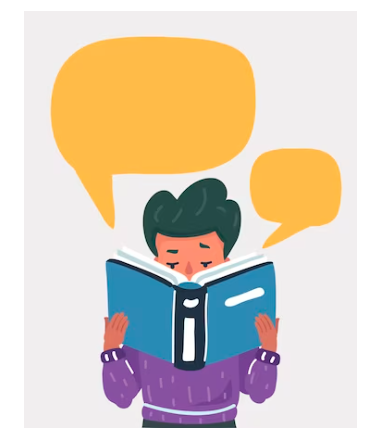Certainly! Self-publishing is a fascinating avenue in the world of books, and it’s worth exploring further! So, if you are a budding writer considering how to bring your book to the real world, let’s dive into this exciting sphere of self-publishing together!
In the past, writers didn’t have many options beyond traditional publishing, which can be quite competitive and come with various hurdles. Think of it like trying to score a goal in a packed soccer match where you have to navigate through a swarm of defenders to make it happen.
Now, the game has changed, and self-publishing is like having your own playing field. It has become a go-to choice for authors worldwide, mainly because of the technological advances that have made it so accessible.
But do you ever think that why is self-publishing such a big deal?
Well, it gives you, the writer, complete control over your book. Imagine being the captain of your own ship, steering it in the direction you choose, from the cover design to the marketing strategy.

But wait, there’s more!!
Traditional publishing can sometimes feel like trying to win a lottery, with thousands of writers vying for a few coveted spots. It’s like hoping your ticket matches the winning numbers.
In contrast, self-publishing empowers you to take matters into your own hands. It’s like starting your own business – you call the shots, and your success is directly tied to your efforts.
In this beginner’s guide, we’ll guide you through the major aspects of self-publishing while understanding the ins and outs, demystifying the process, and providing practical tips to get you started on your self-publishing adventure.
So, are you ready to explore the world of self-publishing and make your writing dreams a reality? Let’s jump in!

Here’s Everything That You Should Know About Self-Publishing
- What is Self-Publishing?
- History of Publishing
- Pros and Cons of Self-Publishing
- Overview of Cost of Self-Publishing
What is Self-Publishing?
Self-publishing is the practice of independently releasing media, particularly creative works like literature, books, music, and visual art, where the creator takes on the role of publisher without involving a traditional publishing house or company.
In the context of self-publishing a book, an author takes charge of full responsibility for the entire production process, including writing, editing, designing, and formatting, without relying on the services of a conventional publishing entity.
Self-published authors enjoy creative freedom, higher royalties, and total control. They use platforms like KDP Amazon, funding the process independently while retaining complete book rights.
In essence, self-publishing means full ownership and responsibility for your book’s creation and production with no third-person involvement.
Following are the steps of self-publishing a book:

Self-publishing doesn’t imply personally performing every task, but rather, you’ll manage and finance the entire process. Since you’re accountable for all aspects of writing and production, it’s essential to allocate a budget for hiring professionals like editors and cover designers to ensure quality.

The History of Publishing
Throughout human history, storytelling has always been a vital way for people to share information and stories. It’s like passing down knowledge from one generation to the next. While the importance of storytelling hasn’t changed, how we share stories has!
In the very early days, our ancestors wrote on clay tablets to convey important information. Surprisingly, we have records of stories from as far back as the 18th century BCE, showing that storytelling has been around for a long time.
As time went on and societies developed, people started writing stories by hand on different materials. They did this to make sure these stories were saved and could be shared with others.
This was a big step in the history of storytelling and publishing because it turned stories into written records that could last for a long time.

The Birth of Traditional Publishing
In 1440, the invention of the printing press revolutionized book distribution and gave rise to the traditional publishing industry.
Historically and even today, traditional publishers acquire specific rights from authors to publish their work. However, this practice has often diminished the author’s control, as publishers acted as “gatekeepers,” determining which books reached a wide audience and which did not.
But then came the digital revolution, sweeping through our world much like a whirlwind, and it left no industry untouched, including the world of publishing. The internet, like a magician’s wand, worked its spell, reshaping how we share stories and knowledge.

The Rise of Self-Publishing
What does self-publishing a book mean, and how has it transformed over the years?
Let’s explore the pivotal events that have contributed to its current widespread adoption.
The evolution of self-publishing can be divided into three distinct phases:
Phase 1.0, which emerged in the 1990s, marked the advent of online eBook sales. This era also witnessed the rise of desktop publishing and print-on-demand technology.
Phase 2.0, which began in 2007, was a significant turning point with the introduction of the Amazon Kindle eReader and the Apple iPhone. These devices revolutionized how people consumed books.
Phase 3.0, the next frontier for the industry, is characterized by direct sales from authors to readers.

Self-Publishing a Book Today!!
In the present day, authors have harnessed the formidable capabilities of technology and the internet to take charge of their book publishing journey, allowing them to reach readers on a global scale.
Gone are the days when traditional publishers held sway over an author’s narrative; for now, it is solely in the hands of the author itself.
Authors are the masters of their own creative timelines, deciding when to craft and release their stories to the world. This shift in control is underscored by the thriving $1 billion self-publishing market, which has emerged as the preferred avenue for many writers.
In this expanding landscape, the path to becoming a self-published author has significantly broadened, offering writers greater opportunities and creative freedom.

Pros and Cons of Self-Publishing
|
Pros of Self-Publishing
|
Cons of Self-Publishing |
|
No Doorkeeper
|
Lesser Support
|
|
No Time Boundaries
|
No One Pushes Your Boundaries
|
|
Full Creative Control
|
Increased Upfront Costs
|
| High Royalty Rates |
Considered as Underdog
|
Pros of Self-Publishing
1- No Doorkeepers
There are no gatekeepers to impede your path to publishing your book – the only obstacle that can hinder you from sharing your work with the world is your own hesitation.
2- No Time Boundaries
When it comes to timelines, self-published authors have a distinct advantage. They can bring their books to market much faster than the traditional publishing route, which often involves lengthy processes.
3- Full Creative Control
With self-publishing, you gain absolute creative authority. You have the ultimate say in how your book is edited, formatted, and designed, allowing your unique vision to shine through.
4- High Royalty Rates
Self-publishing offers the potential for greater earnings. Platforms like Amazon provide significantly higher royalty rates compared to traditional publishing models, enabling authors to reap the rewards of their hard work more directly.
For certain authors, self-publishing may come with drawbacks. It’s essential to carefully assess your own requirements and preferences while contemplating the potential disadvantages.
Cons of Self-Publishing
1- Lesser Support
When you self-publish, you bear full responsibility, which can be haunting for some authors. It can also feel isolating without a supportive community.
2- No One Pushes Your Boundaries
You won’t have external pressure to meet deadlines or establish realistic writing goals; the initiative lies entirely with you to kickstart the process of publishing your book.
3- Increased Upfront Costs
Self-published authors often incur upfront expenses by hiring professionals for services like editing and design.
4- Considered as Underdog
There has historically been a certain stigma associated with self-publishing, given the long-standing dominance of traditional publishing.
However, this perception is evolving, with notable traditionally published authors like Michael Hyatt and Ruth Soukup transitioning to self-publishing.
They have discovered that by investing in professional services, they can produce high-quality books and leverage their own platforms to achieve greater book sales at more favorable royalty rates.

Overview of Cost of Self-Publishing
Self-publishing costs vary widely and are flexible, depending on your budget. On average, producing a quality self-published book typically ranges from $1,500 to $5,000, contingent on the professional services you utilize during the publishing process.
While many self-publishing platforms are free to use, expenses primarily arise during the editing, illustration, design, and marketing phases. The exact cost hinges on individual author requirements, allowing you to tailor your budget accordingly.
However, it’s crucial not to compromise too much, as cutting corners can harm the overall quality of your book.
To publish a book yourself, platforms like Amazon Kindle Direct Publishing (KDP) offer free options. Nonetheless, authors should, at a minimum, invest in a professional editor and cover designer.
Here’s an overview of the average costs for common self-publishing services:
|
Professional Publishing Service
|
Average Cost
|
|
Book Editing
|
$200 – $550 (Depends on the Wordcount) |
| Book Formatting |
$50 – $500
|
|
Book Design (Cover Design)
|
$100 – $1500 |
| Marketing and Promotion |
$0 – $1000
|
The Key Takeaways
If you can find the time to write, create a solid publishing plan, and ensure your book is top-notch in quality – you can leave a literary legacy.
The bottom line is that self-publishing gives authors the power to get their writing out there and share their stories with the world.
Whether you dream of writing nonfiction, novels, or children’s books, the options for self-publishing are incredibly vast.
And here’s the exciting part: You don’t even have to go through the traditional publishing gatekeepers to become an author.
Nowadays, writers and storytellers have more freedom and control over their creative journeys than ever before.
So, tie the knot with your next book because it’s an exciting time to be an author!!!

 Last Updated: January 26, 2024
Last Updated: January 26, 2024

 Last Updated: January 26, 2024
Last Updated: January 26, 2024

 Last Updated: January 24, 2024
Last Updated: January 24, 2024

 Last Updated: January 23, 2024
Last Updated: January 23, 2024

 Last Updated: January 22, 2024
Last Updated: January 22, 2024


 Last Updated: January 22, 2024
Last Updated: January 22, 2024

 Last Updated: January 20, 2024
Last Updated: January 20, 2024

 Last Updated: January 20, 2024
Last Updated: January 20, 2024

 Last Updated: January 20, 2024
Last Updated: January 20, 2024

 Last Updated: January 18, 2024
Last Updated: January 18, 2024

 Last Updated: January 18, 2024
Last Updated: January 18, 2024

4,482
Share
Self-Publishing In 2024 – A Comprehensive Guide to Success
Certainly! Self-publishing is a fascinating avenue in the world of books, and it’s worth exploring further! So, if you are a budding writer considering how to bring your book to the real world, let’s dive into this exciting sphere of self-publishing together!
In the past, writers didn’t have many options beyond traditional publishing, which can be quite competitive and come with various hurdles. Think of it like trying to score a goal in a packed soccer match where you have to navigate through a swarm of defenders to make it happen.
Now, the game has changed, and self-publishing is like having your own playing field. It has become a go-to choice for authors worldwide, mainly because of the technological advances that have made it so accessible.
But do you ever think that why is self-publishing such a big deal?
Well, it gives you, the writer, complete control over your book. Imagine being the captain of your own ship, steering it in the direction you choose, from the cover design to the marketing strategy.
Table of Content
But wait, there’s more!!
Traditional publishing can sometimes feel like trying to win a lottery, with thousands of writers vying for a few coveted spots. It’s like hoping your ticket matches the winning numbers.
In contrast, self-publishing empowers you to take matters into your own hands. It’s like starting your own business – you call the shots, and your success is directly tied to your efforts.
In this beginner’s guide, we’ll guide you through the major aspects of self-publishing while understanding the ins and outs, demystifying the process, and providing practical tips to get you started on your self-publishing adventure.
So, are you ready to explore the world of self-publishing and make your writing dreams a reality? Let’s jump in!
Here’s Everything That You Should Know About Self-Publishing
What is Self-Publishing?
Self-publishing is the practice of independently releasing media, particularly creative works like literature, books, music, and visual art, where the creator takes on the role of publisher without involving a traditional publishing house or company.
In the context of self-publishing a book, an author takes charge of full responsibility for the entire production process, including writing, editing, designing, and formatting, without relying on the services of a conventional publishing entity.
Self-published authors enjoy creative freedom, higher royalties, and total control. They use platforms like KDP Amazon, funding the process independently while retaining complete book rights.
In essence, self-publishing means full ownership and responsibility for your book’s creation and production with no third-person involvement.
Following are the steps of self-publishing a book:
Self-publishing doesn’t imply personally performing every task, but rather, you’ll manage and finance the entire process. Since you’re accountable for all aspects of writing and production, it’s essential to allocate a budget for hiring professionals like editors and cover designers to ensure quality.
The History of Publishing
Throughout human history, storytelling has always been a vital way for people to share information and stories. It’s like passing down knowledge from one generation to the next. While the importance of storytelling hasn’t changed, how we share stories has!
In the very early days, our ancestors wrote on clay tablets to convey important information. Surprisingly, we have records of stories from as far back as the 18th century BCE, showing that storytelling has been around for a long time.
As time went on and societies developed, people started writing stories by hand on different materials. They did this to make sure these stories were saved and could be shared with others.
This was a big step in the history of storytelling and publishing because it turned stories into written records that could last for a long time.
The Birth of Traditional Publishing
In 1440, the invention of the printing press revolutionized book distribution and gave rise to the traditional publishing industry.
Historically and even today, traditional publishers acquire specific rights from authors to publish their work. However, this practice has often diminished the author’s control, as publishers acted as “gatekeepers,” determining which books reached a wide audience and which did not.
But then came the digital revolution, sweeping through our world much like a whirlwind, and it left no industry untouched, including the world of publishing. The internet, like a magician’s wand, worked its spell, reshaping how we share stories and knowledge.
The Rise of Self-Publishing
What does self-publishing a book mean, and how has it transformed over the years?
Let’s explore the pivotal events that have contributed to its current widespread adoption.
The evolution of self-publishing can be divided into three distinct phases:
Phase 1.0, which emerged in the 1990s, marked the advent of online eBook sales. This era also witnessed the rise of desktop publishing and print-on-demand technology.
Phase 2.0, which began in 2007, was a significant turning point with the introduction of the Amazon Kindle eReader and the Apple iPhone. These devices revolutionized how people consumed books.
Phase 3.0, the next frontier for the industry, is characterized by direct sales from authors to readers.
Self-Publishing a Book Today!!
In the present day, authors have harnessed the formidable capabilities of technology and the internet to take charge of their book publishing journey, allowing them to reach readers on a global scale.
Gone are the days when traditional publishers held sway over an author’s narrative; for now, it is solely in the hands of the author itself.
Authors are the masters of their own creative timelines, deciding when to craft and release their stories to the world. This shift in control is underscored by the thriving $1 billion self-publishing market, which has emerged as the preferred avenue for many writers.
In this expanding landscape, the path to becoming a self-published author has significantly broadened, offering writers greater opportunities and creative freedom.
Pros and Cons of Self-Publishing
Pros of Self-Publishing
No Doorkeeper
Lesser Support
No Time Boundaries
No One Pushes Your Boundaries
Full Creative Control
Increased Upfront Costs
Considered as Underdog
Pros of Self-Publishing
1- No Doorkeepers
There are no gatekeepers to impede your path to publishing your book – the only obstacle that can hinder you from sharing your work with the world is your own hesitation.
2- No Time Boundaries
When it comes to timelines, self-published authors have a distinct advantage. They can bring their books to market much faster than the traditional publishing route, which often involves lengthy processes.
3- Full Creative Control
With self-publishing, you gain absolute creative authority. You have the ultimate say in how your book is edited, formatted, and designed, allowing your unique vision to shine through.
4- High Royalty Rates
Self-publishing offers the potential for greater earnings. Platforms like Amazon provide significantly higher royalty rates compared to traditional publishing models, enabling authors to reap the rewards of their hard work more directly.
For certain authors, self-publishing may come with drawbacks. It’s essential to carefully assess your own requirements and preferences while contemplating the potential disadvantages.
Cons of Self-Publishing
1- Lesser Support
When you self-publish, you bear full responsibility, which can be haunting for some authors. It can also feel isolating without a supportive community.
2- No One Pushes Your Boundaries
You won’t have external pressure to meet deadlines or establish realistic writing goals; the initiative lies entirely with you to kickstart the process of publishing your book.
3- Increased Upfront Costs
Self-published authors often incur upfront expenses by hiring professionals for services like editing and design.
4- Considered as Underdog
There has historically been a certain stigma associated with self-publishing, given the long-standing dominance of traditional publishing.
However, this perception is evolving, with notable traditionally published authors like Michael Hyatt and Ruth Soukup transitioning to self-publishing.
They have discovered that by investing in professional services, they can produce high-quality books and leverage their own platforms to achieve greater book sales at more favorable royalty rates.
Overview of Cost of Self-Publishing
Self-publishing costs vary widely and are flexible, depending on your budget. On average, producing a quality self-published book typically ranges from $1,500 to $5,000, contingent on the professional services you utilize during the publishing process.
While many self-publishing platforms are free to use, expenses primarily arise during the editing, illustration, design, and marketing phases. The exact cost hinges on individual author requirements, allowing you to tailor your budget accordingly.
However, it’s crucial not to compromise too much, as cutting corners can harm the overall quality of your book.
To publish a book yourself, platforms like Amazon Kindle Direct Publishing (KDP) offer free options. Nonetheless, authors should, at a minimum, invest in a professional editor and cover designer.
Here’s an overview of the average costs for common self-publishing services:
Professional Publishing Service
Average Cost
Book Editing
$50 – $500
Book Design (Cover Design)
$0 – $1000
The Key Takeaways
If you can find the time to write, create a solid publishing plan, and ensure your book is top-notch in quality – you can leave a literary legacy.
The bottom line is that self-publishing gives authors the power to get their writing out there and share their stories with the world.
Whether you dream of writing nonfiction, novels, or children’s books, the options for self-publishing are incredibly vast.
And here’s the exciting part: You don’t even have to go through the traditional publishing gatekeepers to become an author.
Nowadays, writers and storytellers have more freedom and control over their creative journeys than ever before.
So, tie the knot with your next book because it’s an exciting time to be an author!!!
Table of Content